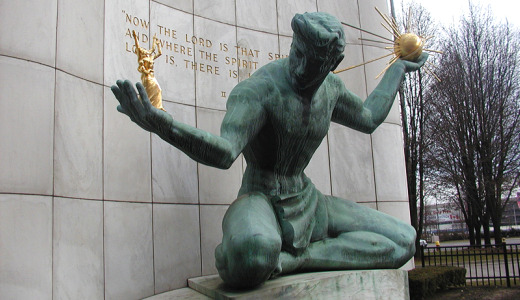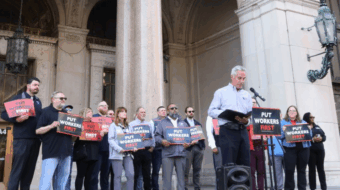
I’m still a Detroiter in spirit. I lived there in the ’70s and ’80s and return regularly now. My years there left a distinctive mark on me.
Last month I visited Detroit and once again saw first-hand what can only be described as an economic and human catastrophe. This great city of rich African American and working class tradition has been pillaged by the corporate class. Unless you are there, it is hard to imagine the scale of the destruction and the crisis of everyday living. It is of an order of magnitude that is off the charts – no exaggeration.
The crisis there is decades long now. The Great Recession, as bad as it is, only deepened the economic misery and closed off whatever avenues remained for a decent job and life.
Yes, there are some pockets of development especially downtown, but the signs of unrelieved poverty are everywhere. Detroit, as is said, is no place for wimps.
Unemployment officially is in the 27 percent range and unofficially as high as 45 percent, according a recent article in the Detroit News. Mind you, in the depths of the Depression that figure was roughly 25 percent.
The city’s productive base has been relocated, shuttered, or dismantled. When I first arrived in Detroit in the mid-70s, auto plants, big and small, spread across the southeast and southwest side of the city, providing union jobs and benefits to Black and white workers alike and an entry point into the workplace for their children. The Ford Rouge plant in nearby Dearborn was still an integrated production site with everything from steel-making to auto assembly, and employed about 25,000 workers.
Over the last quarter century, the city has lost a million people. Some went to other states, some moved to the suburbs. This de-peopling of a once thriving city in the space of a few decades is probably unprecedented.
Schools and the quality and availability of other public services mirror the larger crisis of the city.
Boarded homes and overgrown lots where houses once stood are commonplace. Some of the latter have been turned into community gardens – a testament to the resourcefulness and community spirit of this city’s people.
The city is like “a raisin in the sun.”
Most of the poor are African Americans, but not all. Poor white people and a long-standing Mexican American community remain too. Joining them are new immigrants, mainly Central American.
What their future will look like is still to be decided. One thing is for sure – no one should hang their hopes on private capital and the private sector.
The immediate causes of this calamity are traceable to the intersection of private capital – namely U.S. auto corporations – and intensified racism and right-wing extremism that dominated national politics for three decades.
On a deeper level, capitalism is the guilty party. Its insatiable, built-in desire to accumulate capital and maximize profits is the motor that has driven the relentless exploitation of autoworkers, the rise of a hyper-competitive global auto industry, new decentralized worldwide production networks, the flight of capital from the real economy where profits are lower into non-productive, highly speculative ventures in unregulated financial markets, and the impoverishment and fracturing of the autoworkers and their communities, and, not least, racial inequality and oppression.
So if private capital and the larger system of capitalism (which developed in an interactive and organic embrace with racial slavery and subsequent systems of racial oppression) got the city and its working people into this mess and likewise have no desire to clean it up, where should Detroiters look for solutions? What is needed to revive the city? Three things come to mind.
First, a massive and sustained federal government commitment to rebuild the city, provide jobs, and restructure the region’s economy along green lines.
Second, a battle against deficit hysteria coming from Washington and Wall Street. The massive deficits are a potential problem, but still pale in the face of a stagnant economy that, unless something is done, promises a long stretch of high unemployment and growing inequality.
Third, a reenergizing of the movement that elected President Obama. If there is any one conclusion that we can draw from the past year, it is that a growing, sustained, multi-racial people’s movement, in which labor is in the center, isn’t yet operating on all cylinders.
The recent jobs and infrastructure initiative of the AFL-CIO, NAACP, La Raza and other organizations represents a potential launching pad for a momentous struggle for Detroit’s future and the future of the country.
As I see it, an energized, broadly based, multi-racial movement is the key link that if grasped can decisively change the trajectory of Detroit and the whole country to a path that favors people, their communities, and racial and other forms of equality rather than corporate profits, tax breaks for the wealthy, war spending, and lopsided, uneven, and racially unequal economic development.
In the longer term, an alternative system – socialism – at the center of which is the conscious activity and needs of working people and their allies – is on the agenda.
Photo: The “Spirit of Detroit” statue in downtown Detroit. http://www.flickr.com/photos/farlane/ / CC BY 2.0









